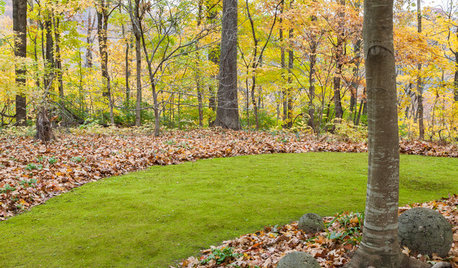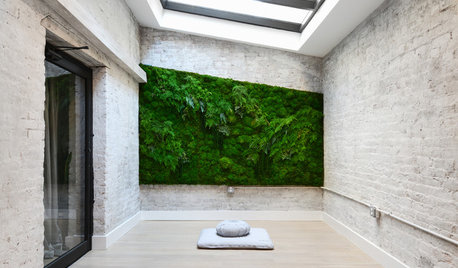Anyone else growing moss species in pots?
terrestrial_man
18 years ago
Related Stories

FARM YOUR YARDHow to Grow Vegetables in Containers
Get glorious vegetables and fruits on your patio with a pro’s guidance — including his personal recipe for potting mix
Full Story
LANDSCAPE DESIGNMoss: Nature’s Carpet for the Garden
Learn how to grow and use this ancient and mysterious natural wonder for delightful texture in the landscape
Full Story
GREEN BUILDINGWorld of Design: The Joy of Moss and Its Modern Uses
This great design plant is 400 million years in the making. See how it’s inspiring art, soothing spaces and building design
Full Story
COFFEE WITH AN ARCHITECTClassification of the Design Species
A scientific analysis of the diverse variety of species found in the world of design
Full Story
KITCHEN DESIGNThe Cure for Houzz Envy: Kitchen Touches Anyone Can Do
Take your kitchen up a notch even if it will never reach top-of-the-line, with these cheap and easy decorating ideas
Full Story
SUMMER GARDENINGHow to Grow Basil
Bright color, quick growth and endless uses for cooking make this summer annual a winner in the garden or a pot
Full Story
GARDENING GUIDESWhat Kind of Roses Should You Grow?
Want to add the beauty of roses to your garden? Find out which ones, from old-fashioned to modern, are right for you
Full Story
FARM YOUR YARD6 Things to Know Before You Start Growing Your Own Food
It takes time and practice, but growing edibles in the suburbs or city is possible with smart prep and patience
Full Story
HOUSEPLANTSHow to Grow Orchids Indoors
Orchids are the exotic aristocrats of the flower world and can make themselves comfortable in almost any home
Full Story
HOUSEPLANTS10 Top Plants to Grow Indoors
Brighten a room and clean the air with a houseplant that cascades artfully, stretches toward the ceiling or looks great on a wall
Full Story

deep_woods
terrestrial_manOriginal Author
Related Professionals
Summit Landscape Architects & Landscape Designers · Vernon Hills Landscape Architects & Landscape Designers · Biloxi Landscape Contractors · Edinburg Landscape Contractors · Olympia Landscape Contractors · San Pedro Landscape Contractors · The Villages Landscape Contractors · Waltham Landscape Contractors · Antioch Landscape Contractors · Chicago Roofing & Gutters · New Lenox Roofing & Gutters · Staten Island Roofing & Gutters · Athens Decks, Patios & Outdoor Enclosures · Fort Myers Decks, Patios & Outdoor Enclosures · Puyallup Decks, Patios & Outdoor Enclosuresdeep_woods
joanmary_z10
terrestrial_manOriginal Author
brendainva
deep_woods
terrestrial_manOriginal Author
brendainva
terrestrial_manOriginal Author
deep_woods
brendainva
terrestrial_manOriginal Author
deep_woods
terrestrial_manOriginal Author
kdzine
terrestrial_manOriginal Author
kdzine
terrestrial_manOriginal Author
lycopus
kdzine
terrestrial_manOriginal Author
kdzine